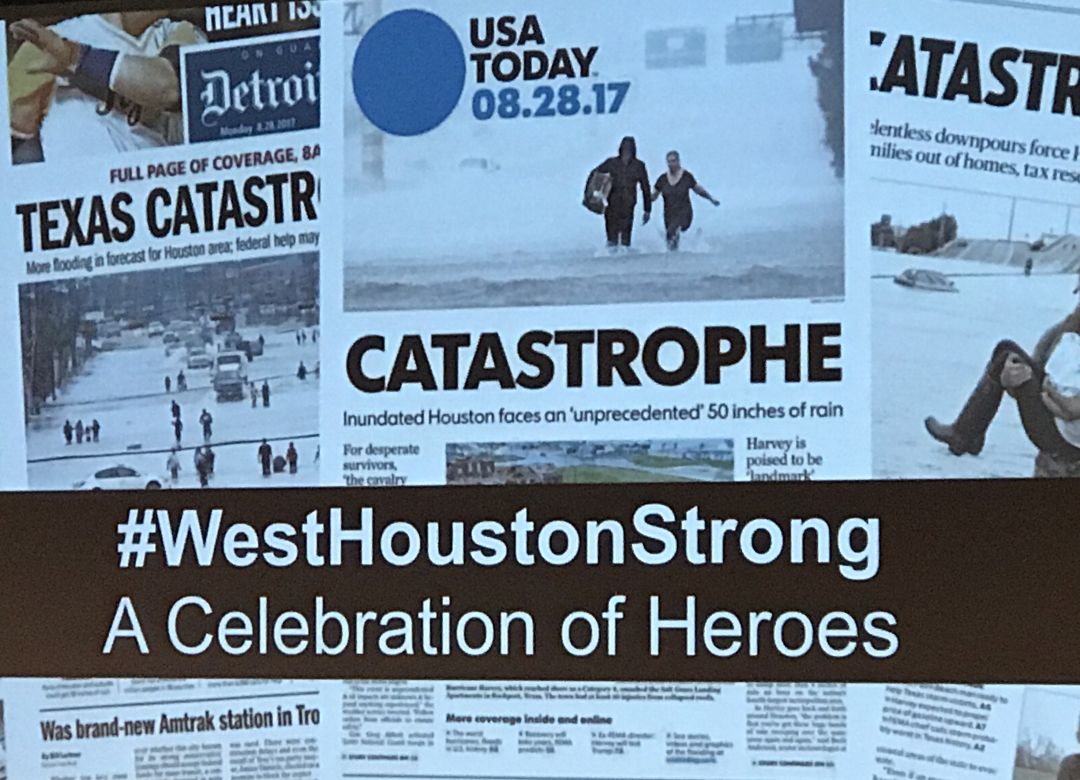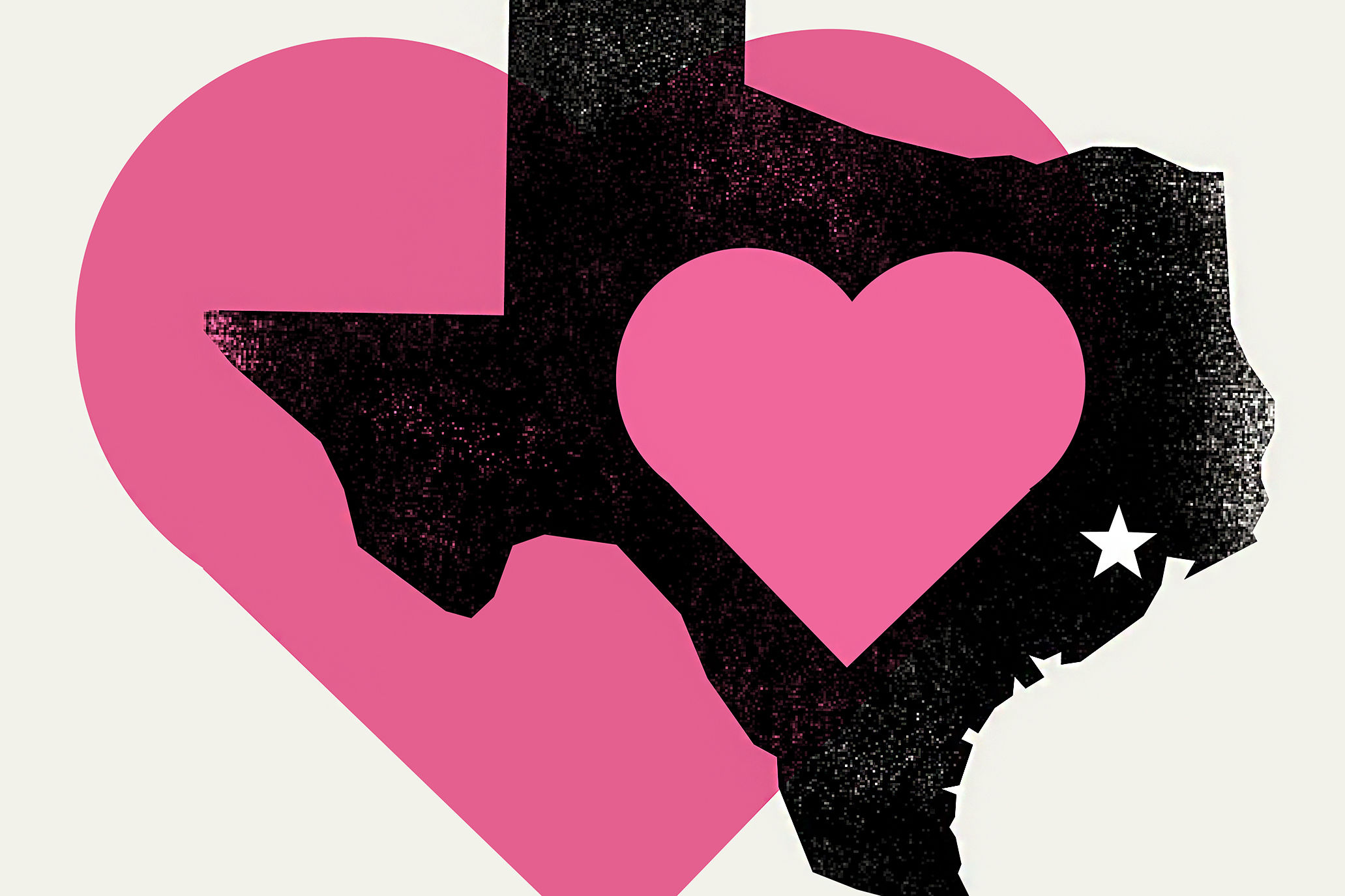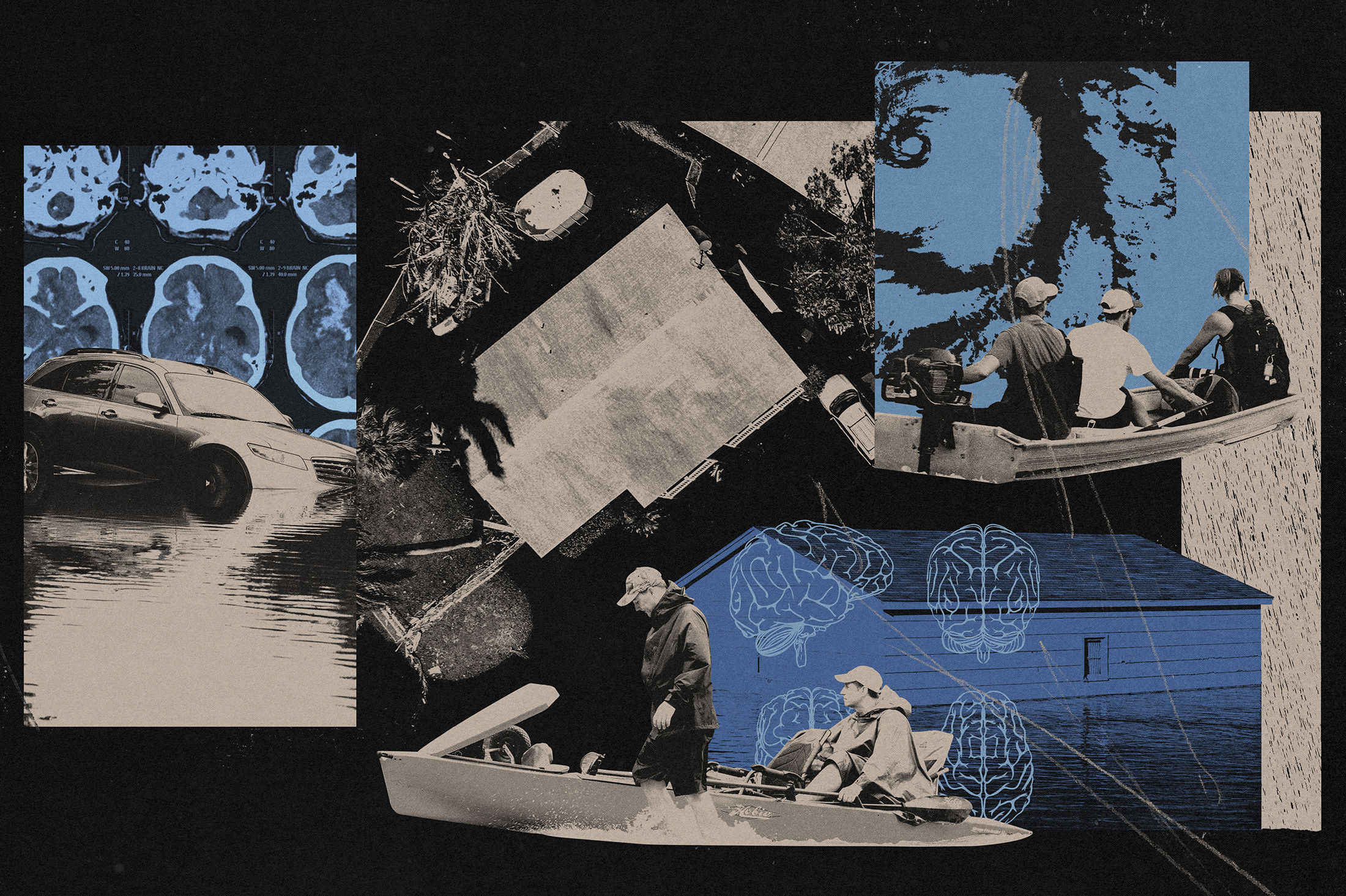A Year After Harvey, West Houston Remembers

West Houston residents gathered on Sunday, September 9, for an anniversary event centered around a new documentary.
Image: Morgan Kinney
"Where were you one year ago today?" asked Maria Sotolongo before a packed auditorium of West Houston residents.
"Demo!"
"Wearing waders!"
"I think we still had two feet of water in the house."
Each response excavated memories not of Harvey's natural floodwaters, but the deliberate flooding of West Houston. It was the latter event that left thousands of homes—nearly all of which had never flooded before—virtually unlivable.
That’s also why hundreds of residents were gathered and shouting on a recent weekend for the debut of Sotolongo's documentary, Changed: When the Dams Opened. A filmmaker and former television journalist, her project follows 10 West Houston families, including her own, in the aftermath of the flooding. The film also interviews both Harris County Flood Control District Meteorologist Jeff Lindner and Mayor Sylvester Turner for their official take on the disaster.
Changed opens with the facts: Unlike much of Houston, where 50-plus inches of rain inundated low-lying areas, West Houston weathered the worst parts of the storm without historic flooding. It wasn't until after Harvey waved goodbye that the Army Corps of Engineers released the swollen Addicks and Barker reservoirs, consuming scores of homes in floodwaters overnight.
Officials defended the decision as necessary to protect the much greater number of homes that would flood downstream, should the reservoirs fail. And some (but certainly not all) of the West Houston residents understood that reality, too, resigning themselves to their role as sacrificial lambs. But why, many asked, were they not given ample warning and time to evacuate?
"As I talked to more people and asked them what could have happened differently, a lot of the families would go directly into, They should have warned us! We weren't on the flood maps! We’ve been forgotten!" Sotolongo says. "That’s what I heard over and over again, and, you know, they’re right. I feel the same way."
Because her own home was destroyed, most of the film was captured on Sotolongo's smartphone, which lends the interviews a raw, confrontational quality. Parents, families, and retirees offer glimpses into their gutted homes. The filmmaker trains the camera on herself, too, surveying street gutters stuffed with flood-stranded fish rotting in the sun. Massive, two-story debris piles accumulated on front lawns for weeks.
"What killed us and most of West Houston was the water staying there for 14 days," Sotolongo told us. "We just couldn’t come back, and that’s when the vile concoction of sewage and fish and all kinds of bacteria was left to brew."
After the screening was finished—with many audience members tapping into the personal Kleenex packs distributed to each seat—the crowd took stock of where things stand today. Many said they're yet to complete renovations. Some decided to take the loss and walk away from their property. Whatever the situation, the crowd echoed the film's central idea—that everyone felt changed, incapable of ever returning to how things once were.
Losing your wedding albums, your baby books, your kid's rock collection—Sotolongo said that kind of complete loss compares to the death of a loved one.
"It’s that emotional tapestry we’ve all been weaving ever since we’re born," she said. "We have relationships with these objects, and they’re all gone. That’s what I hope that the documentary can do, that it can give you all these details and the intricacies of how we all feel of losing everything—and how you don’t just lose it. Then you have to gut your house. You have to financially figure it out. You have to go through the turmoil of securing your future. You are affected in that very deep, real way."
Yet even as the aftermath lingers, a whole year later, the tangible neighbor-helping-neighbor camaraderie that characterized so much of the recovery persists. In that sentiment, there might be a silver lining.
"Doesn’t it feel comforting," Sotolongo asked the crowd, "to know you’re not alone?"
Additional screenings of Changed: When the Dams Opened Sept. 23 and 26. Tickets $10. More info and tickets at mariasotolongo.com.




